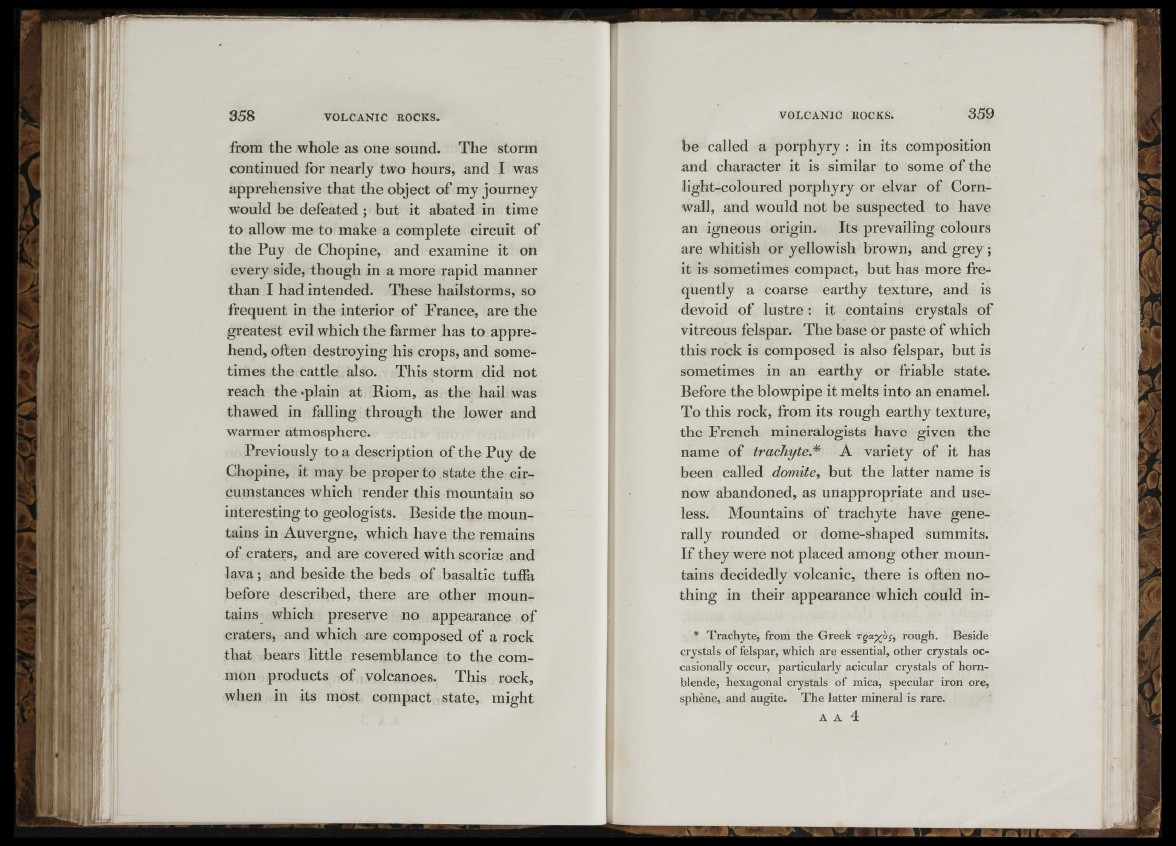
h i
m
1Ü =
'S I
'■■»1 7
i : i -
’*'7
i7liilî
i
ii f
'W !i|
,Î3 ‘- :•
H :. 1 :
îi'«
358 VOLCANIC ROCKS.
from the whole as one sound. The storm
continued for nearly two hours, and I was
apprehensive that the object o f my journey
would be defeated ; but it abated in time
to allow me to make a complete circuit o f
the Puy de Chopine, and examine it on
every side, though in a more rapid manner
than I had intended. These hailstorms, so
frequent in the interior o f France, are the
greatest evil which the farmer has to apprehend,
often destroying his crops, and sometimes
the cattle also. This storm did not
reach the -plain at Biom, as the hail was
thawed in falling through the lower and
warmer atmosphere.
Previously to a description o f the Puy de
Chopine, it may be proper to state the circumstances
which render this mountain so
interesting to geologists. Beside the mountains
in Auvergne, which have the remains
of craters, and are covered with scoriæ and
lava ; and beside the beds of basaltic tuffa
before described, there are other mountains
which preserve no appearance of
craters, and which are composed of a rock
that bears little resemblance to the common
products of volcanoes. This rock,
when in its most compact state, might
VOLCANIC ROCKS.
be called a porphyry : in its composition
and character it is similar to some of the
light-coloured porphyry or elvar of Cornwall,
and would not be suspected to have
an igneous origin. Its prevailing colours
are whitish or yellowish brown, and grey ;
it is sometimes compact, but has more frequently
a coarse earthy texture, and is
devoid o f lustre : it contains crystals of
vitreous felspar. The base or paste of which
this rock is composed is also felspar, but is
sometimes in an earthy or friable state.
Before the blowpipe it melts into an enamel.
To this rock, from its rough earthy texture,
the French mineralogists have given the
name of trachyte.* A variety of it has
been called domite, but the latter name is
now abandoned, as unappropriate and useless.
Mountains of trachyte have generally
rounded or dome-shaped summits.
I f they were not placed among other mountains
decidedly volcanic, there is often nothing
in their appearance which could in-
* Trachyte, from the Greek rgct^vg, rough. Beside
crystals of felspar, which are essential, other crystals occasionally
occur, particularly acicular crystals of hornblende,
hexagonal crystals of mica, specular iron ore,
sphene, and augite. The latter mineral is rare.
A A 4
I ^
h f
rà
t.t